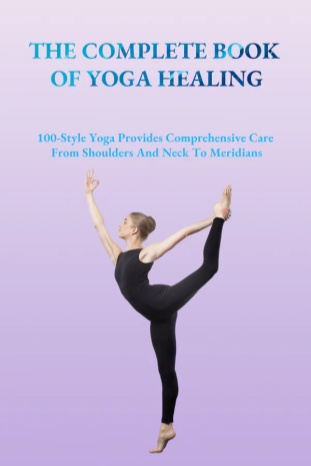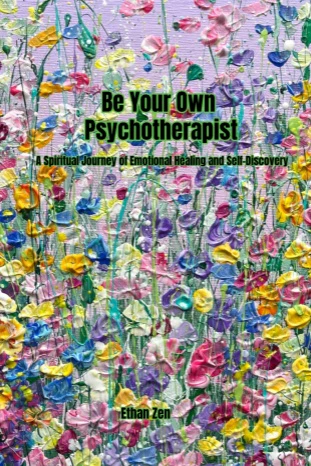Meditation Techniques for Pain Management and Physical Well-being
Millions of people all over the world suffer from chronic pain, stress that could be caused by emotional stress, and lower quality of life. Medications and physical therapy are common treatments; however, meditation has been gaining attention as one natural way to deal with pain. Meditation research has also proven that it can really reduce pain perception and their physical well-being. In this article, specific meditation techniques to manage pain and what they bring to your physical health is discussed.

What’s the state of the science in Understanding Meditation for Pain Relief?
Meditation can shift your focus away from the discomfort of pain, relaxing you, and change the way you perceive your pain. Regular meditation practice can make you less sensitive to pain and help reduce stress related symptoms, often which intensify pain, studies indicate. Meditation thins out brain areas that affect how pain is processed and improves how our natural way of coping with pain works.
Mindfulness Meditation for Pain Management
Mindfulness meditation means paying attention to the present moment voluntarily without judgment. Rather it brings pain under an objective observation rather than stressful or frustrated reactions.
Technique:
- Focus on Breath: Breathe slowly, sit comfortably. Try to pay attention to each inhale and each exhale.
- Acknowledge Sensations: If you can feel the pain, notice it, but not react emotionally to it.
- Accept and Release: Feel the pain, and let go of fighting to stay out of it.
Benefits:
Meditation that is mindful helps people to separate this physical feeling of the pain from this emotional response and this means that overall discomfort may be reduced. It may reduce chronic pain levels and help with arthritis and fibromyalgia, according to studies.
Body Scan Meditation for Physical Awareness
Body scan meditation is a mindfulness technique that involves scanning the body for tension or pain. This helps us to learn to recognize and release our pain over time.
Technique:
- Find a Quiet Space: Sit or lie down comfortably.
- Start at the Feet: Let your attention focus on your feet, and see what you feel.
- Move Upward: Build up your focus gradually moving from the legs to the abdomen, chest, arms and head.
- Release Tension: At each part of the body, consciously release any tightness or pain.
Benefits:
Body scan will reveal where the tension in the body is, and it will get rid of the physical feeling of discomfort in the body. People experiencing pain caused by muscle tension, stress or chronic illness can use this technique as it works well. It relaxes and helps one be aware with which one copes with physical discomfort.

Pain Relief Guided Visualization
Imagery, or guided visualization, is a way of using the power of imagination to foster a healing pain reducing state. It means that you imagine peaceful images or scenarios meant to help your body relax and ignore pain.
Technique:
- Choose a Visualization: Think of a place that is calm like, beach or forest.
- Engage the Senses: Imagine the place’s smells, sights, sounds.
- Direct Healing: Imagine in the painful direction there is healing energy flowing, easing the pain and soothing.
- Stay in the Scene: Just spend a couple of minutes in this mental state. Feel calm.
Benefits:
The guided visualization alters pain perception by making the mind calmed and peaceful. It also activates relaxation centers in the brain, reduces the pain and improves well being. Visualization techniques have been found to help with pain management in cancer and post surgical patients.
Immediate pain relief through Breathing Exercises
Simple, but effective, breathing exercises will help relieve pain and physical stress immediately. It is said that concentrating on the breath can also help to relax people and reduce tension, and it can do this to the extent of helping to manage pain in acute situations — when pain is causing the most distress, when it is at its worst.
Technique:
- Deep Breathing: Slowly breathe in through your nose, hold for a few seconds and slowly exhale through your mouth, again.
- Counted Breathing: Breathe for 4 in, hold 4, exhale 6.
- Box Breathing: Inhale four, hold four, exhale four, pause four, and then inhale again.
Benefits:
Breathing exercises alleviate stress and tension, and with it, relieve the body and, consequently, the pain. Breathing techniques calm the nervous system, releasing endorphins—natural painkillers — which give a temporary relief and boost mood.
Emotional Support Loving Kindness Meditation
Loving kindness meditation (LKM) is a meditation that specializes in wellness with compassion and kindness to others and to oneself. Chronic pain can cause: Emotional distress, Frustration, a negative mindset. It’s about redirecting these feelings from causing psychological impact on pain to using LKM to bring people to feelings of positivity and compassion.
Technique:
- Focus on Self-Compassion: Wish yourself well saying, “May I be free from pain.”
- Extend Kindness: Begin to begin to extend these wishes to others, starting with loved ones, then ending with strangers.
- Embrace Positive Emotions: Read these phrases, as with each repetition you will be able to feel the warmth of compassion towards yourself and others.
Benefits:
LKM is actually able to reduce the emotional stress of living with chronic pain by promoting a positive mental state. In studies, the people who do human kindness meditation state that they have lesser pain and overall well being. And it builds resilience, allowing people to better tolerate pain.
Meditation: How Supporting Physical Well Being

Meditation improves our physical health through all of this, to lower blood pressure, better sleep, a stronger more effective immune system, etc. Here’s how meditation supports overall physical well-being:
Reduced Inflammation
Inflammation is often linked to chronic pain, causing the pain to get worse and causing more physical health problems. Meditation cuts the stress response in the body, including lowering cortisol and other markers of inflammation. Reduction in inflammation will help to reduce pain symptoms, improve joint function and increase immunity.
Improved Sleep Quality
That vicious cycle of pain disrupts sleep and lack of sleep increases your pain. It relaxes the body and prepares for rest. By meditating – especially things like mindfulness and breathing exercises – you have been able to increase the quality of sleep for the body to get the rest it needs to repair, etc.
Enhanced Mood and mental repertoire.
Because living with chronic pain can cause anxiety and depression, it is emotionally challenging. Meditation makes us calm and learn to be resilient. By teaching us to handle stress and stay positive. Good mental health can help improve physical health by lower stress related symptoms and maintain balance in our emotions.
Practical Ways to Start Meditating for Pain Relief
It doesn’t take years of experience to start a meditation routine to manage pain. Here are some tips to make meditation a part of your daily life:
- Start Small: Start with 5 – 10 minutes daily and build up overtime.
- Use Guided Meditations: Structured sessions within apps and videos suggest different techniques.
- Find a Quiet Space: Find a comfortable and some quite spot to take yourselves out of the way.
- Be Consistent: Meditation for pain relief requires regularity.
Conclusion
A holistic approach to pain management is by meditation that not only provides physical but also mental benefits for well being. By offering mindfulness and body scan techniques as well as guided visualization, meditation helps you cope with pain with more resilience and calm. Incorporating meditation into your daily routine can help lessen your pain, overall improve your physical health, and maintain an even mindset. But with exercise, meditation is a useful tool for minimizing pain and increasing overall quality of life.







